What’s Up?
I finished the Southern Ocean Photography Guide but learned from an early reviewer that none of the links in the PDF work. 🙁 I finished an article for Helen Slaughter-Saccone for the spring issue of Nature Photography magazine. And a swim and an ice bath.
Sash Dias sold his used Nikon D4 body in excellent condition for $2399 the day after it was listed. You can see all of the great Used Photo Gear listings by clicking here or by clicking on the Used Photo Gear tab on the right end of the orange menu bar at the top of each blog page.
This blog post took 2 1/2 hours to prepare.
The Streak
Today’s blog post marks 89 days in a row with a new educational blog post. Again, please remember to use our B&H links for your major gear purchases. Your doing so is always greatly appreciated. 🙂
|
Thanks to Dan Neri, Len Musmeci, and the Canon Explorers of Light program for their support of the Camera Club of Brevard speaking gig. |
Melbourne EoL Speaking Event
On Tuesday, February 2, 2016 I will be presenting “A Bird Photographer’s Story” for the Camera Club of Brevard. The meeting begins at 6:30pm and is free and open to the public. This program is sponsored by Canon USA/Explorers of Light. A small selection of books and CDs will be available for sale. You can find complete details including the location here.

B&H
B&H contributed generously as the primary SDNHM exhibition sponsor. Thank them (and me for the blog) by clicking on the logo link above to shop.
|
This image was created on July 15, 2014 at Nickerson Beach, Lido Beach, Long Island, NY with the tripod-mounted Canon EF 600mm f/4L IS II USM lens and the rugged Canon EOS-1D. ISO 250. Evaluative metering +2 stops: 1/1000 sec. at f/5.6. AWB. A single AF point that was two to the right of the center AF point/AI Servo Expand/Rear Focus AF as framed was active at the moment of exposure. In 2014 I was still using Rear Button Focus all the time; today in this situation I would have been using Shutter Button AF. Click here to see the latest version of the Rear Focus Tutorial. Click on the image to see a larger version. Image #1 |
Picking Your Keepers 101…
A few days ago I wrote; “In the follow-up to the hugely popular and somewhat controversial blog post here, Brendan left a comment that I have paraphrased here: One instructional thing I would love to see on this blog is a basic lesson on how to look critically look at one’s photos. About eight years ago I began saving series of similar images from which I planned to do an Evaluating Your Images guide. At some point, I lost that file. I started a new one and eventually lost that one too. 🙁 This morning I found a still newer file with only a few images in it including the five posted here today. More on those below. I will have Jim search a ton of external Hard Drives on Monday for the two files that are MIA (though I am 99% sure that he will not find the original one).
IAC, I asked that folks critique the full frame image of the Heermann’s Gull with the Red Tuna Crab in its bill. Many responded, but most folks struggled identifying what I thought were obvious problems… I shared my critique of that image here.
|
This image was created on July 15, 2014 at Nickerson Beach, Lido Beach, Long Island, NY with the tripod-mounted Canon EF 600mm f/4L IS II USM lens and the rugged Canon EOS-1D. ISO 250. Evaluative metering +2 stops: 1/1000 sec. at f/5.6. AWB. A single AF point that was two to the right of the center AF point/AI Servo Expand/Rear Focus AF as framed was active at the moment of exposure. In 2014 I was still using Rear Button Focus all the time; today in this situation I would have been using Shutter Button AF. Click here to see the latest version of the Rear Focus Tutorial. Click on the image to see a larger version. Image #2 |
Please trash this image
As an experiment, I posted the Heermann’s Gull with the Red Tuna Crab in its bill image on BPN. You can see that thread here. As I fully expected–the first to comment, Ross Taylor, nailed the critique matching what I had said about the image almost word for word:
Hi Artie. Trashing for fun? Ok, I’ll bite 😉
A higher POV would raise that horizon away from the head. A looser crop could give the tail a little more clearance to the edge of frame, without making the bird appear too central. The body and head seem turned away slightly. The scratches and crab guts in the foreground draw the eye, and perhaps could be considered to be cloned out. There is a specular highlight or dust spot above the tail.
…. and furthermore, lol, the tight crop portrait seems to emphasize the action much better than the OP. TFS-Ross
Many folks agreed and one or two went off on a tangent. If you read the thread, you will see that I stood up for my work when I disagree with folks. I always do. Even with an image that I consider sub-par.
All in all the folks on BPN did a much better job of critiquing the image than the folks here on the blog. The result? We will be doing lots of “Picking Your Keepers 101” blog posts. Today’s is the first of many to come.
|
This image was created on July 15, 2014 at Nickerson Beach, Lido Beach, Long Island, NY with the tripod-mounted Canon EF 600mm f/4L IS II USM lens and the rugged Canon EOS-1D. ISO 250. Evaluative metering +2 stops: 1/1000 sec. at f/5.6. AWB. A single AF point that was two to the right of the center AF point/AI Servo Expand/Rear Focus AF as framed was active at the moment of exposure. In 2014 I was still using Rear Button Focus all the time; today in this situation I would have been using Shutter Button AF. Click here to see the latest version of the Rear Focus Tutorial. Click on the image to see a larger version. Image #3 |
Setting the Scene
The five images presented here today were purposefully selected from a 16-image sequence for inclusion in what I hope will be a very educational series of posts. All of the images have a yellow cast, and all need to be leveled. All are pretty sharp.
Question
How can you tell that each of the five images needs to be leveled?
Your Job
Your job here today is a simple one. Identify the worst of the five images and let us know why. Then identify the what you consider to be the very best image, and let us know why.
If you cannot identify the worst of the five images, the one that should be an insta-delete, you are advised to scroll down and join BPN immediately.
|
This image was created on July 15, 2014 at Nickerson Beach, Lido Beach, Long Island, NY with the tripod-mounted Canon EF 600mm f/4L IS II USM lens and the rugged Canon EOS-1D. ISO 250. Evaluative metering +2 stops: 1/1000 sec. at f/5.6. AWB. A single AF point that was two to the right of the center AF point/AI Servo Expand/Rear Focus AF as framed was active at the moment of exposure. In 2014 I was still using Rear Button Focus all the time; today in this situation I would have been using Shutter Button AF. Click here to see the latest version of the Rear Focus Tutorial. Click on the image to see a larger version. Image #4 |
BirdPhotographer’s.Net (BPN)
The very best way to learn to evaluate your images is to plunk down your forty bucks and join BPN. You post your images and have them critiqued by many of our fine moderators and lots of skilled members, and in turn, you get to learn a ton by commenting on the images of others. And best of all, it ain’t just birds! There are image critique forums that cover other areas. These include Wildlife, Macro and Flora, Landscapes, Cityscapes and Travel, Out Of The Box, In Camera and Post Processing Techniques, Framing Your Images With Words, and Story Sequences. In addition, beginning nature photographers can receive extra help in the Eager to Learn Forum. You can click here to access any of the aforementioned forums in addition to the Photography Discussion (and other) forums. If you join and post an image please e-mail me the link and I will be glad to stop by and comment.
|
This image was created on July 15, 2014 at Nickerson Beach, Lido Beach, Long Island, NY with the tripod-mounted Canon EF 600mm f/4L IS II USM lens and the rugged Canon EOS-1D. ISO 250. Evaluative metering +2 stops: 1/1000 sec. at f/5.6. AWB. A single AF point that was two to the right of the center AF point/AI Servo Expand/Rear Focus AF as framed was active at the moment of exposure. In 2014 I was still using Rear Button Focus all the time; today in this situation I would have been using Shutter Button AF. Click here to see the latest version of the Rear Focus Tutorial. Click on the image to see a larger version. Image #5 |
Stay Tuned!
Stay tuned for my thoughts on the five images, the answer to the leveling question (along with a great tip on how to do it), and more Picking Your Keepers 101 posts.
|
From upper left clockwise to center: Black Skimmer head portrait, American Oystercatcher dining on surf clam flesh, Common Tern at sunset, Common Tern adult swallowing flatfish, Black Skimmer in flight, newborn Common Tern chick, American Oystercatcher with chick, fresh juvenile Common Tern (with fill flash), and Common Terns copulating. |
Nickerson Beach Terns/Skimmers/Oystercatchers Instructional Photo-Tour (IPT): July 18-22, 2016. 4 1/2 DAYS: $1899.
Meet and greet at 3pm on the afternoon of Monday, July 18. Limit 10.
The primary subject species of this IPT will be the nesting Common Terns. The trip is timed so that we will get to photograph tiny chicks as well as fledglings. There will be lots of flight photography including adults flying with baitfish. Creating great images of the chicks being fed is a huge challenge. In addition to the terns we will get to photograph lots of Black Skimmers courting, setting up their nesting territories, and in flight (both singles and large pre-dawn flocks blasting off). Midair battles are guaranteed on sunny afternoons. And with luck, we might even see a few tiny chicks toward the end of the trip. We will also get to photograph the life cycle of American Oystercatcher. This will likely include nests with eggs and tiny chicks, young being fed, and possibly a few fledglings.
Nesting Piping Plover is also possibly. There will be lots of gulls to photograph; most years I am able to find a few Lesser Black-backed Gulls of varying ages in addition to the Herring, Ring-billed, and Great Black-backed Gulls. You will learn to identify and age the various gull species. There will likely be some Willets feeding along the surf and with luck we might get to photograph a handsome juvenile or two. In addition to the locally breeding shorebirds, we will likely get to see some southbound migrant arctic-and sub-arctic breeding shorebird species such as Sanderling, Semipalmated Plover, and maybe even Red Knot.
Click here and scroll down for complete details.
birds as art: The Avian Photography of Arthur Morris/The Top 100
|
From Rod Anton via e-mail
Dear Artie, Beyond the superlatives you have received for your beautiful presentation, all of which I agree with whole heartedly, I would like to add my thoughts about your exhibition. I see the the dedication, the determination, the passion and the tenacity that drives you, as well as your love of the birds and of your love of photography. Congratulations. The exhibit-companion CD deserves a shout out. Sincerely, Rod Anton
Please Remember to use our Affiliate Links 🙂
To show your appreciation for my continuing efforts here, we ask, as always, that you get in the habit of using my B&H affiliate links on the right side of the blog for all of your photo and electronics purchases. Please check the availability of all photographic accessories in the BIRDS AS ART Online Store, especially the Mongoose M3.6 tripod heads, Gitzo tripods, Wimberley heads and plates, LensCoats and accessories, and the like. We sell only what I have used, have tested, and can depend on. We will not sell you junk. We know what you need to make creating great images easy and fun. And we are always glad to answer your gear questions via e-mail. I just learned that my account was suspended during my absence; it should be up and running by Monday at the latest.
I would of course appreciate your using our B&H affiliate links for all of your major gear, video, and electronic purchases. For the photographic stuff mentioned in the paragraph above we, meaning BAA, would of course greatly appreciate your business. Here is a huge thank you to the many who have been using our links on a regular basis and visiting the BAA Online store as well.
Be sure to like and follow BAA on Facebook by clicking on the logo link upper right. Tanks a stack!
Typos
In all blog posts and Bulletins, feel free to e-mail or to leave a comment regarding any typos or errors. Just be right 🙂

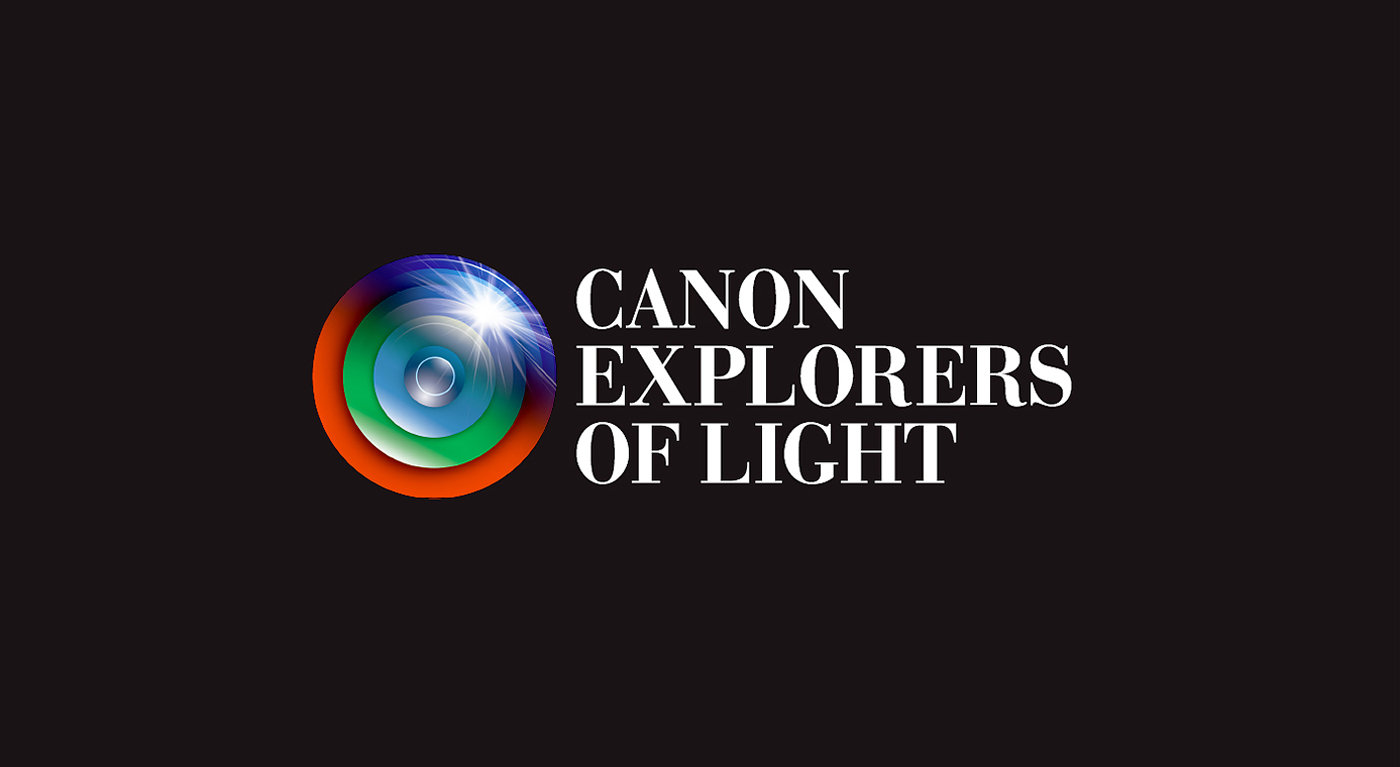
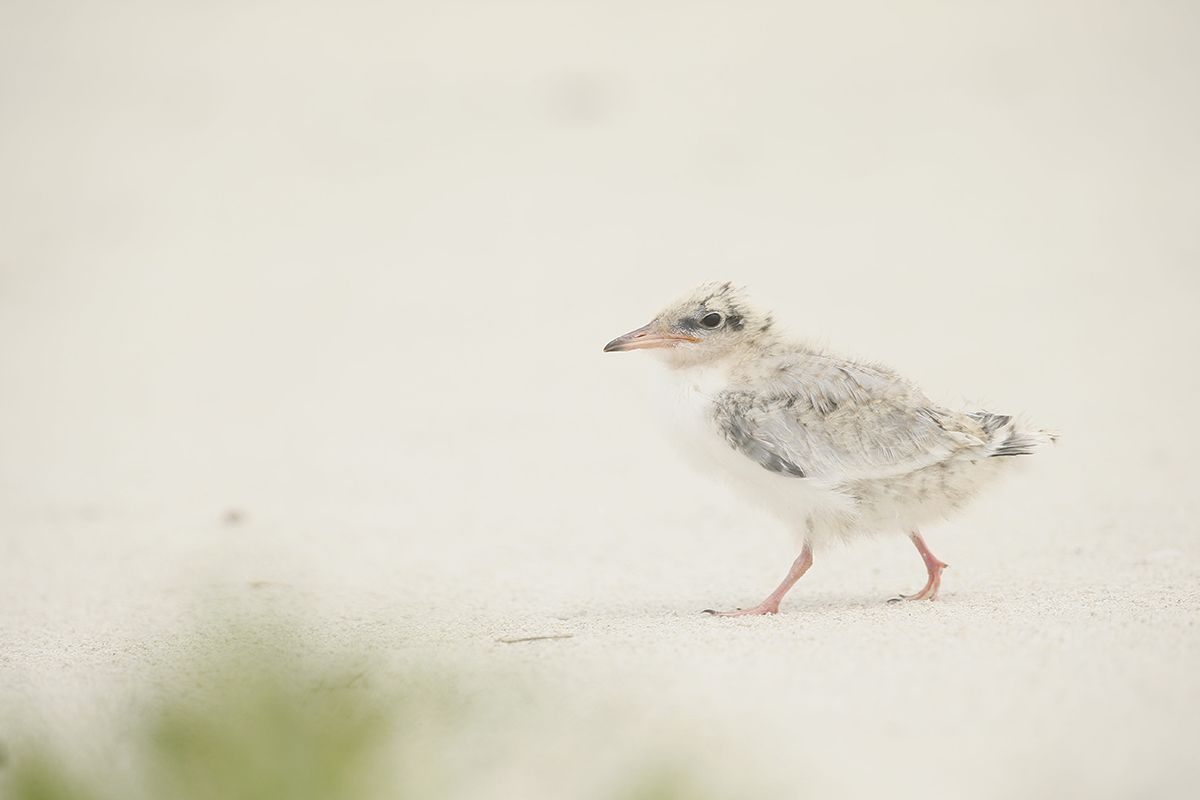
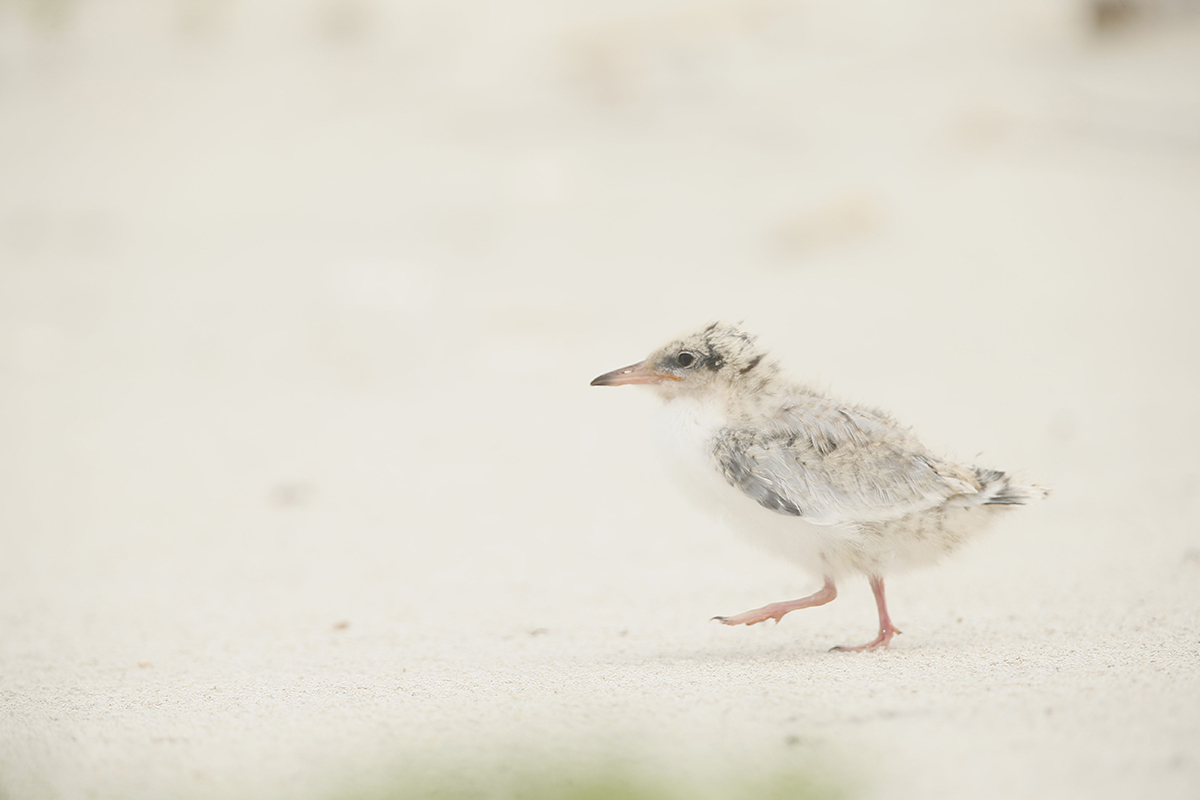
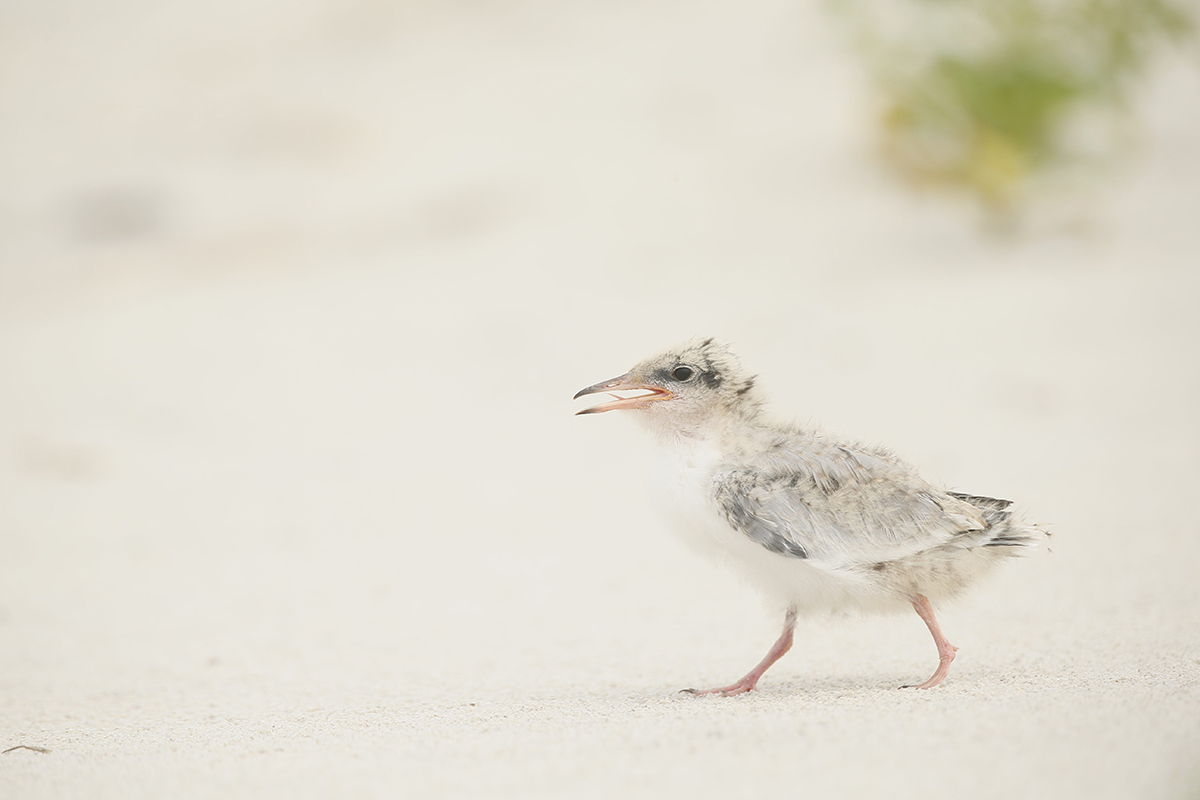
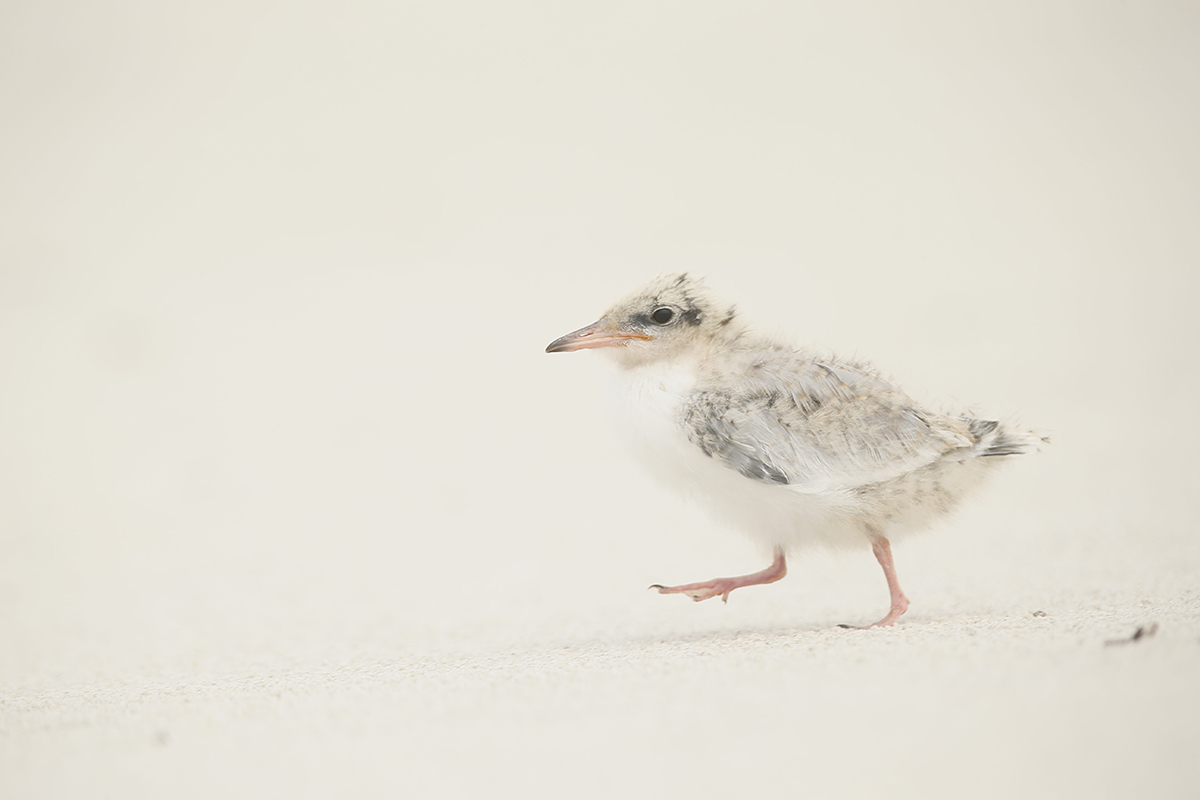
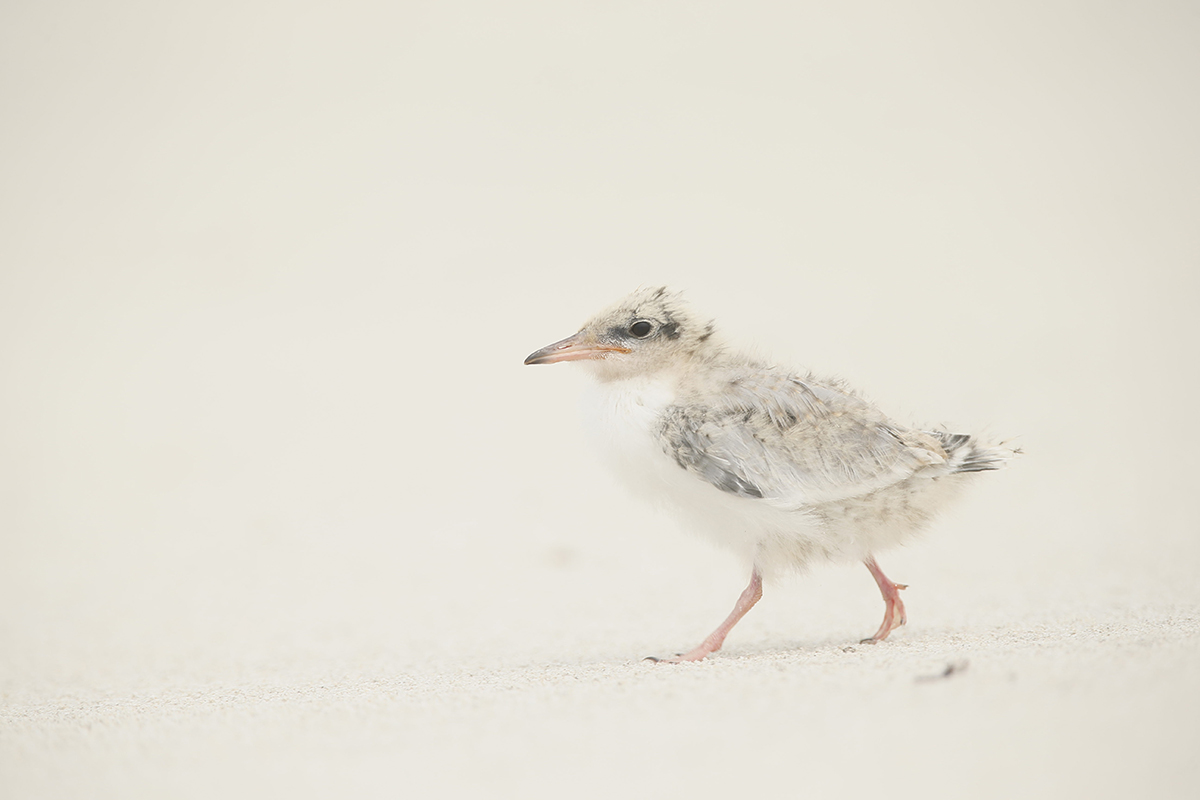
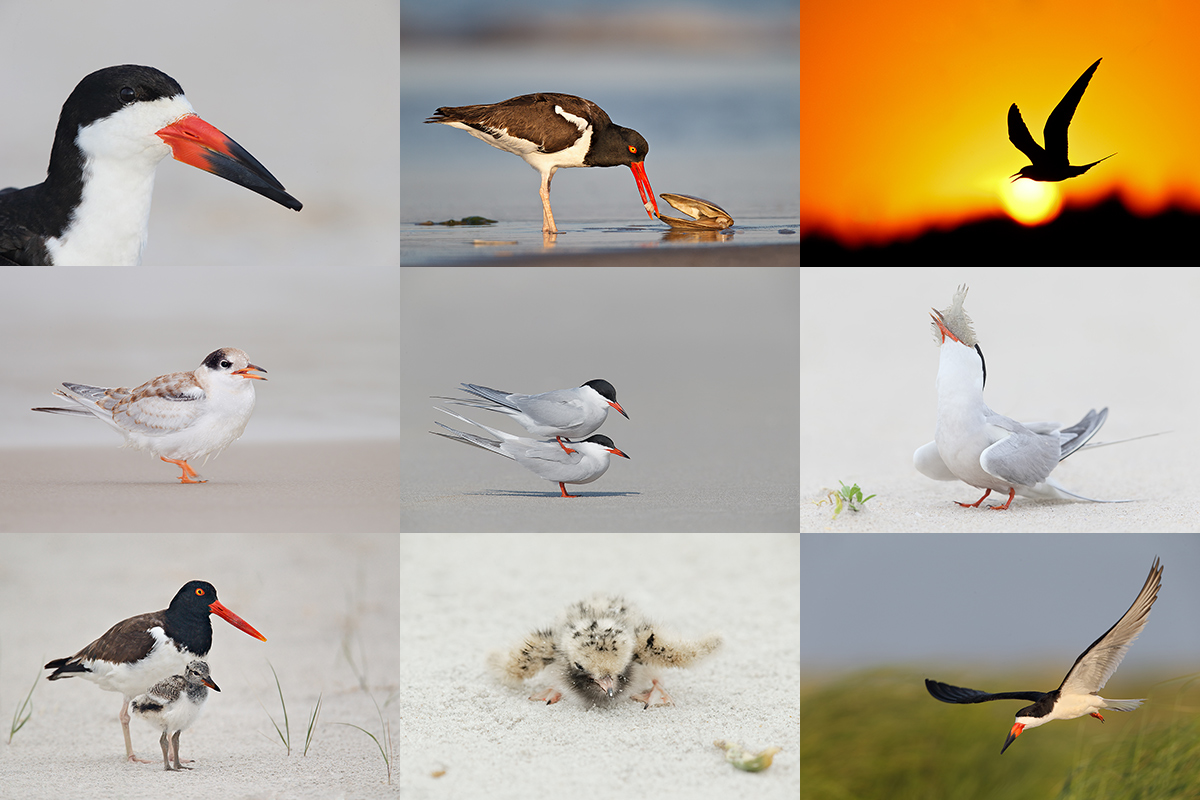
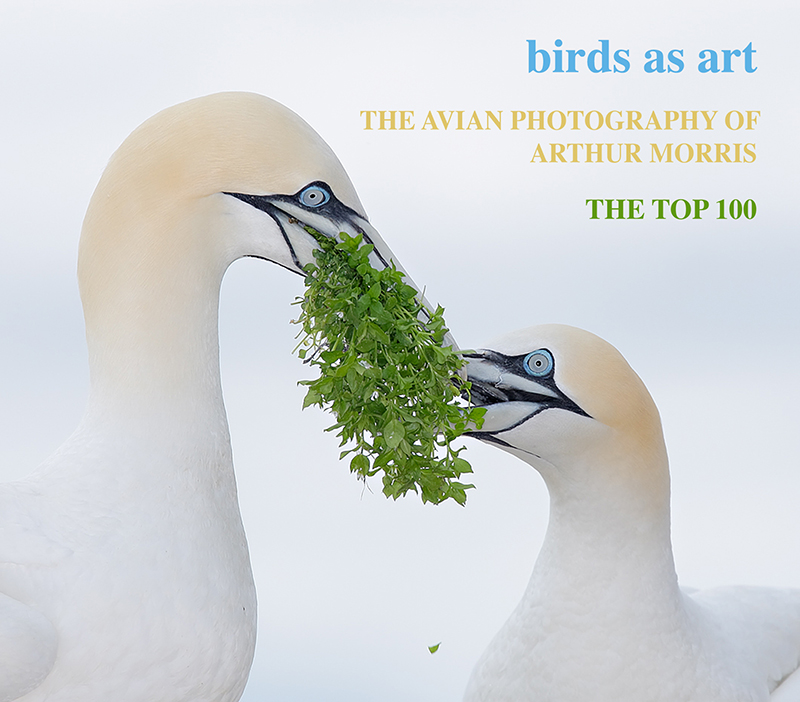













The shadows/plane of focus should be level assuming the beach is level.
The first part of your question is an easy call, trash #2 due to the head angle.
As for the best, hmmm, I need to bullet-point my thoughts.
– like HA of #1 due to the playful tllt towards you, but points of others surpass this
– love the tongue of #3
– prefer the raised foot of #4
– like the BG vegetation in #3
For me, if I really wanted to construct my ideal shot, I’d take the head from #3 and place it on #4. From there I’d lower the bird in the frame a bit and bring the vegetation from #3 and place it in the upper left corner for balance.
Summary: 4 as base image with the head and vegetation of 3.
A simpler final would be 4 as base image with just the vegetation from 3.
Hope that made sense. 🙂
How many would you keep Artie? I would probably be inclined to keep most if not all but if I were taking a lot more images I can understand you would want to lower that number.
As such I would keep 3 & 4. I like the out of focus green blob in 1 but prefer the action in 3 & 4.
Hey Gary, Stay tuned. a
If the beach is level you have sloping shadow which should be straightened. The bird looks most calm in 1 and most agitated in 3. I like these the best for this contrast and the green tells me a little more about the beach they are on and does not detract me.
#2 is the trash picture. The head is angled ever so slightly away. If I had to pick the best one I
would say image 5. No green blobs, and the subject is subtly yet visibly separated from the tan sand.
In my opinion (and apparently that of many others who have responded), #2 is the worst image of the 5. The blotchy background and the little bit of green in the foreground add nothing to the composition. Also, as many have said, the angle of the head is just wrong and leads your eye away from the image.
My favorite is #3. Whenever I think of a juvenile bird, it’s got it’s mouth open. This image screens “I’m a baby bird!” “Feed me! Feed me!” I also like the fuzzy background blotches which help to keep my eye moving through the image.
Artie, even if you tell me I need to sign up for BPN, I was thinking…before this blog post, that I’d like to do so anyway 🙂
Hi K., Good plan. Where do you live? a
Southeastern Wisconsin
Thanks. So San Diego, or Nickerson, or Japan or the UK 2017 🙂 a
Hi Artie.
Like many have already commented here # 2 gets deleted for head angle.
I like # 4 the best.good head angle and with a bit of clean up and some levelling so shadow under the bird is level it looks really nice. Not much separation between the birds breast and the background.
Maybe this will be the subject of a future post as you comment further on how to improve the image.
Hey David,
I did not even consider the breast/background separation when I optimized the image; we shall see in a day or three.
a
Scrap #2, bad HA
Best : #1, best one looking at us. Same action as #5 but better head angle and I like the environnent info that is given by vegetation.
#3: interesting behaviour with the beak open
#4 & #5 : same level for me. Their main quality resides in the clean environment.
Great set of images. The line of focused sand suggests a clockwise leveling. As a single image #2 is the weakest due to the head angle, but I wouldn’t delete it. #3 is my favorite because it looks like he is singing along with the music he’s hearing with those headphones he’s wearing. I would love to see a panoramic with a sequence of five of the same chick walking a long swinging his head to the music, singing! (#2 or others from the 16 originals might be needed!)
As far as leveling. IMHO sand is never level so a shadow wouldn’t be either. I’d try to remember whether the sand was level or not, If it was, then I would level the photo. If not, I wouldn’t level.
3 is my favorite for the greenery which balances the chick some. I like the added color from the greenery and it also makes the habitat more interesting . Head and whole body is parallel to film plane but I like that as it gives me the sense that the chick is on a mission going forward.
4 is not my favorite only because there is no greenery. But I like the head angle and foot up.
2 is a trasher to me mainly because of the head angled away. OOF greenery is much better in the background than in the foreground as it is here.
Punched the wrong button and lost my first post. It included this– I would probably try your NIK Color Efex recipe to separate the white breast feathers from the sand a bit more.
Nickerson Beach is a flat place, and one of the most beautiful white sand beaches in the world.
a
Artie,
Thank you doing this exercise. in my opinion #4and # 5 are flat, the bird disappears into the background. # 2 would be good but there is something between the back of the bill and the eye, probably a strand of grass so that is probably the instant delete.
For best I would pick # 1 and would add some canvas behind the bird
Jeff Friedhoffer
For me #2 quickly stood out as the easy delete as the HA is turned away from us. #1 and #5 were next in line for a delete as I found the planted feet to be less interesting than the raised foot in #4.
The hard part for me was picking a winner between #3 and #4. #4 has a better HA than #3, #4 HA is just slightly turned towards us compared to #3 that is pretty much parallel. However, the open beak and tongue in #3 gave that image the most “life” to the subject. #4 for the better HA and raised foot. I’d probably keep those two and decide later.
The green vegetation would be easy to remove if you wanted to. I like its position in #1 more than #3. I would surely remove it in #2 but we won’t be keeping that one anyways.
As far as levelling the image, we can see the shadow is pointed down from R to L in all the images….but if the bird was walking down a hill then levelling wouldn’t be needed unless you wanted to make it look flat.
All, Do remember that there are some who might love the out-of-focus green blobs 🙂 And do not forget that it is very easy to move them with a Quick Mask… a
Artie: Thanks for this. I know you’d delete far more of my images than I would, but even I try to delete at least 80% of them, and so your help here is much appreciated. First, though, I must admit to being intimidated by critiquing your images and by being compared with people on BPN. That said, I’ll have a go. I’d delete image 1 because of the green blob and because the bird isn’t doing anything particularly interesting. I’d delete image 2 because again the bird isn’t doing anything particularly interesting and the head angle (and the whole bird angle) aren’t pleasing. I like image 3 because the bird’s mouth is open–I always find that interesting–and its long steps indicate fast motion, which goes along with the open mouth to indicate anxiety if not fear. I don’t like the green blob, of course. I also like image 4 because of the clean background, the raised foot, and the nice head angle. I’d probably delete image 5, although it has a clean background and decent head angle, because it just feels static to me. So I’d keep images 3 and 4.
Feeling intimidated is a choice 🙂 My point is that picking your keepers becomes easier with practice. Lots of folks join and lurk and learn before posting their first image. a
ps: you did quite well.
Artie: I have learned a great deal from you, both through getting it wrong and sometimes getting it right. Thank you, thank you. I guess my choice was not to be intimidated.
I second these kinds of posts in learning how to take a harder look at series images to pick the keepers. I have a lot to learn myself. Insta-delete – #2 – head turned away and attention of the bird is off in the distance. I’m torn between #3 and #4 as favorites. I like the sense of movement in both and #3 shows a bit more life and character with the open bill. The chick is moving toward something that really has his attention however the background is cluttered with the green behind it which #4 lacks making it a cleaner shot.
I would say that Image 2 is the least attractive because of the bird’s head angle. My favorite is Image 4. I like the head angle and the motion and the uncluttered background. I realize that you could clean up the shots with green foliage, but why bother if you have a nice one without it?
My least favorite is the second image as the chick is looking and moving away from the camera. As for the leveling, the in focus portions of the sand appear headed downward. I would apply clockwise rotation.
Thank you so much for this educational series! These kinds of basics are just what I need. Amazing help.
Re: leveling – I think you want the shadow below the bird to be straight horizontal.
Re: most/least favorite – my favorite is the fourth one, least is the first one. What distinguishes them to me foot positions. I like the ones that are mid-step, and the 4th has the cutest/most interesting, most “actiony” position. I don’t like the ones where both feet are on the ground – too static feeling, loss of foot/toe detail.
Hey Brendan,
YAW. It took me forever to approve your original comment as I had lots of thinking to do as to how I could help you (and others) as per your request. So thanks for your patience.
As far as the critiquing, you still have some work to do…
best, artie